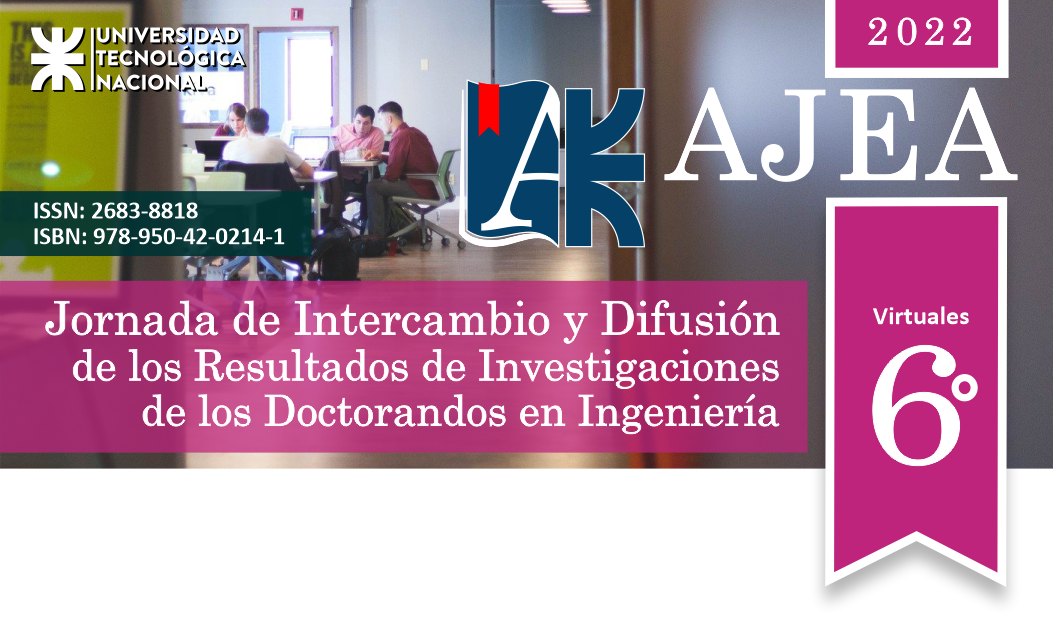Biosorption of divalent metals on peanut shells. Incorporation of contaminated biomass in ceramics
DOI:
https://doi.org/10.33414/ajea.1108.2022Keywords:
Biosorption, ceramics, metalsAbstract
In this research, the removal of divalent ions in aqueous solution was studied using an agroindustrial residue as adsorbent material. The metals under study were Cu (II), Zn (II) and Ni (II), while peanut shells were the biomass used. For their uses as adsorbents, the shells were dried at 100°C, ground and separated by particle size, discarding those larger than 1000 μm. They were then analyzed using various techniques to determine their physicochemical and environmental characteristics: SEM-EDS, XRD, FTIR, pH, SBET, among others. The adsorption tests were carried out in batch, putting 100 ml of solution of known concentration of the metals, prepared in the laboratory, in contact with the biomass. The biomass contaminated with metals was used as a pore former in ceramics, thus seeking to immobilize the retained metals. The values of the adsorption experiences, which present the maximum removal, are: for copper 30.2%, for zinc 75.4%, and for nickel 65.9%. The results of this study show that peanut shells can be used as an effective, ecological and low-cost biosorbent material to remove copper, zinc and nickel ions in aqueous solution. They also show that, at high concentrations, as in the case of copper, probably occur the saturation of the biomass in metal, while at lower concentrations adsorption equilibrium is reached. Ceramic products obtained from clay, and mixtures of clay and 10% peanut shells with different metals, have similar properties.










